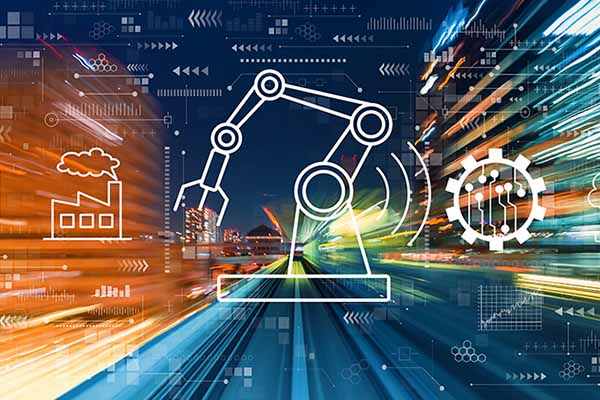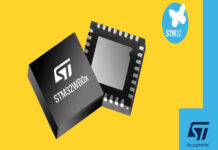Organizations moving towards smarter approaches that are now well-known by enablers, integrators, processors and final solution providers. Newer approaches toward human workload by automating the process are taking a new dimension altogether. The new proven business dimension is also churning newer ways of putting up individual company processes and a huge mentorship is behind automating these existing processes. Creating high-value, high-volume work can be automated as a proof-of-concept. Though it is said implementing the right integration and also enabling technology-front mindsets must also be a key part of the decision-making process.
It is also said that 2022 will be the year of hyper-automation. Now workflow can be automated so the workforce can focus on newer strategies enabling a newer seamless focus across organizations.
In this vigorous shifting automation landscape, decisions to transition and understanding the scale of transformations are getting vitally important. For anybody who is betting on the money to automate the outcomes seems to be deserving and overwhelming at the same time.
Automation and Democratization – The Cost of Time!
Time is the new cost for organizations and with the area of interest changing of employees inside the organization; one doesn’t want to be a part of working for silos applications. Hence manual processes are now been taken over seriously where employees can think and innovate and create more value for their capacity rather than managing manual work processes. Hence also the reason for democratizing automation is that reason is not to turn into a geek. If machines can self-control or say operate then the amount of toil given behind a machine consistently can be withdrawn. Hence freely making machines work is the need of the hour. Also, companies looking for technology to enable their employees to orchestrate work across all the systems. They want the machines to work for them, not for them to work for the machines.
Hence the important role of IT infrastructure across organizations also becomes critically important. Also on the other hand, automation should bring value at a cost of less IT expenditure is also seemingly getting important. Today inside Industry 4.0 onlookers are profoundly interested that their work is taken care of by machines while they can take care of far more important projects.
Artificial Intelligence the Way The Automation Thinks!
What about automating the automation in an intelligent and more intuitive way? Artificial Intelligence (AI) has the power which virtually make everything work and many times in the physical world too. There are much more possibilities which are been explored on how a machine behaves towards humans and how humans respond to its machines.
A good example comes from many manufacturing companies in India, “Where machines are seen as God and are celebrated for a day on the auspicious occasion of VISHWAKARMA PUJA”.
This gets limitless to understand how machines are vitally a part of employees as they find the Iron & Steel well combined to have helped them with their jobs for years.
With the help of AI, it seems to be making the machine more exciting to work with. Also organizations are defining new strategies for how their employees get attracted to create more responsive products with the help of AI.
Hence these new automation technologies are bringing newer opportunities and defining the definition of machine capabilities impacting transformative work. Large chunks of boring administrative work, such as responding to enquiries, requests and issues will be automated. For example, 86% of an HR professional’s day is currently taken up by administrative work, leaving little time for strategic projects. With less energy sapped by repetitive work, your people will be revitalized in their pursuit of your organization’s mission.
Digital Twins Empowering Hyperautomation
Multiple surveys have been stating that more than 60 per cent of decision-makers are expected to use hyperautomation to build digital twins of their operations in the coming years. A digital twin is a virtual model – or replica – of an actual process, service, or product that allows the builder to simulate, test and various scenarios in a virtual, zero-risk environment. Originally developed in manufacturing settings to help engineers test and refine physical assets such as engines and turbines, with the help of AI-powered process mining tools, organizations can now build digital twins of business processes. You can see how a slight change to a process will impact the ones that come after it, test how increased production would wear on machinery, or simulate how setting different speed limits for field representatives would affect fuel costs.
As such, the digital twin market is expected to grow to over 36 billion dollars by 2025 at a CAGR of 38%.
The top benefits include:
- Automated process discovery. Using process mining tools, organizations can accelerate the identification of new processes to automate
- By centralizing process intelligence into one central dashboard, process mining enables cross-functional collaboration and communication
- Promotes experimentation while also reducing risk (both financial and regulatory) by allowing users to test process changes in a safe virtual environment before implementing them in the real world
As hyperautomation is the totality of automation efforts in an organization, we can observe a similar industry trend to that of digital twins. In fact, pushing hyperautomation within the company often leads to the creation of a digital twin. It allows organizations to visualize how functions, processes and key performance indicators interact to generate value. This digital twin then becomes an integral part of the hyperautomation process that provides continuous, real-time intelligence and drives business opportunity relevance. Hyperautomation also facilitates the creation of digital twins. It is essentially the virtual replication of an entire organization. Indeed, if you create a digital representation of your equipment or your services, hyperautomation requires that you do the same for each element of your organization.
Impact of Combining Hyperautomation/Digital Twin – Examples
1. By creating a digital twin of a hospital, managers will be able to assess, for example, the impact of a change in staffing or ward layout. They will be able to anticipate whether a change in one department will create a bottleneck in another, without any impact on patients and staff.
2. Another example is the optimization of physical machines. This equipment is equipped with a large number of sensors that can detect several parameters (temperature, vibration, pressure, etc.). Hyperautomation usually involves processes that are triggered according to monitored thresholds. If the pressure becomes too high, a notification is sent to maintenance. If vibrations are slightly out of range, a maintenance ticket can be created automatically.
3. Hyperautomation also has enormous potential for the factory of the future. The combination of advanced technologies will not only help unlock factories but also meet new sustainability requirements. Hyperautomation depends entirely on the existing digitalization in place. Production machines must provide relevant information about their status and use. Hyperautomation comes into play once you incorporate all this information into the wider framework of an organization.
4. Another important use case is the identification of business risks. Since hyper automation provides a holistic view of an organization, companies will be able to develop a deep understanding of how they operate and simulate scenarios to identify where their organization is no longer scalable.
5. Hyperautomation will also bring more job satisfaction. In addition to business productivity, hyper-automation helps employees find a balance by automating tasks and giving human resources time to focus on higher value-added activities. References: (https://www.kosmostechnologies.io/post/hyperautomation-and-digital-twins-complementarities-and-perspectives)
Automation in 2023 – How it Will Behave?
The rapid adoption of manufacturing technologies has led to many executives purchasing tech not vetted by their workers, only to surprisingly find expensive machinery and robots packed away in the back room. Most commonly, the machines either stopped working or are found to intrude on daily work. In these cases, the use of machines slows things down instead of speeding things up as promised. The rapid adoption of manufacturing technologies has led to many executives purchasing tech not vetted by their workers, only to surprisingly find expensive machinery and robots packed away in the back room. Most commonly, the machines either stopped working or are found to intrude on daily work. In these cases, the use of machines slows things down instead of speeding things up as promised. Shifting to human-centric operations means democratizing the shopfloor and empowering your frontline workers to make impactful decisions. For this to happen, manufacturers need a system that is flexible, scalable, and accessible enough to support everyone in your plant, including operators, industrial engineers, and plant managers. This is also where traditional MES have consistently failed manufacturers. As costly and disruptive as they are, traditional MES are very inflexible, requiring time and effort to implement any changes to your processes, slowing improvements and curbing innovations.















